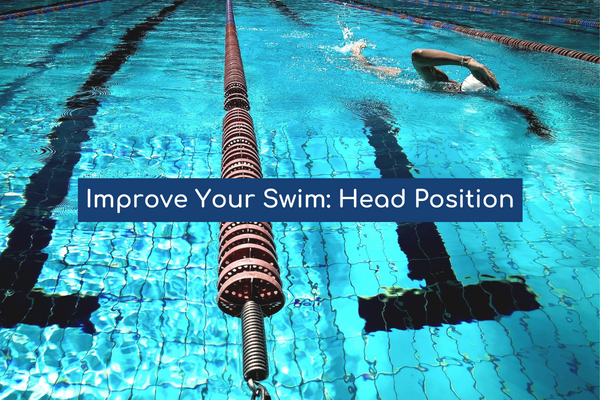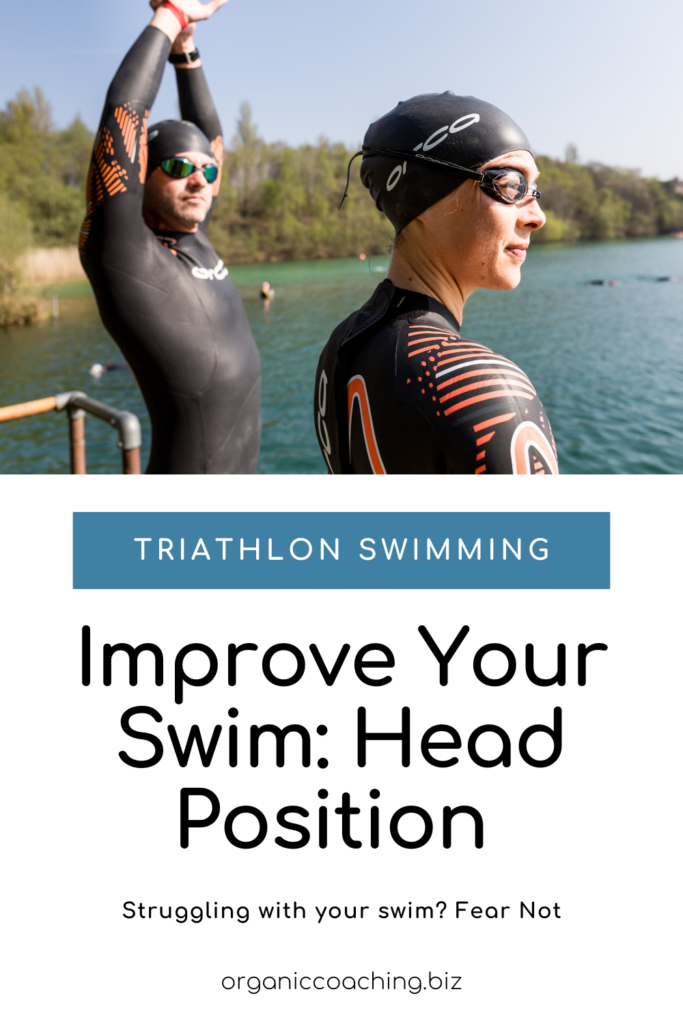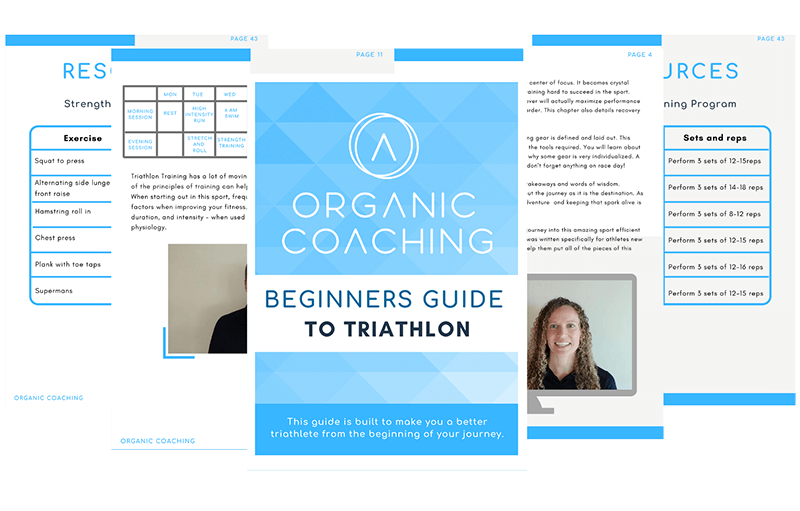

We’re continuing our swim series this week with a focus on head position. With so many technical aspects involved in swimming, it can be overwhelming to know where to focus our energy, such that we get the most return on our investment. The desired outcome might be reducing drag, increasing propulsion, or improving muscular endurance. In every case, it should always be decided in the broader context of your goals, strengths, and weaknesses, as well as working into your available time. Too much focus in an area that only yields tiny results might not be the best bang for your buck. To that end, I’ve chosen the head position as the next area of attention. As it ticks so many of these boxes. It’s a very common shortcoming of our form with big implications for our speed, drag, and body position. While also being something fairly easy to improve or outright correct. So, we’ll spend some time walking through why this is such a big issue, how to tell if this is a problem for you, what you can do to improve it, and how to put it together with the rest of your stroke.
Simply put, when the head is high, the lower body sinks. Requiring much more effort to move through the water. This is information known to most swimmers, as it’s one of the first things many of us learned as a means of reducing drag and going faster. And yet, it’s still one of the most common pitfalls many of us inadvertently run into. Our body tends to work a little like a see-saw, largely led by our head. So, when your head is too high, the hips drop. This creates a significant amount of resistance in the water, and in turn, leads to much slower swimming, and much higher energy spent.
There are a few ways you can determine if this is a problem for you. The easiest is to look where you’re looking. If you tend to look up the pool, or more forward than down. It’s very likely your head is up too high. It’s very natural to do this as you want to see where you are going. Especially to avoid accidentally hitting the wall. Even when considering how to improve sighting in open water, we are inclined to look up to see if we’re on course.
If you don’t observe yourself looking up, this also manifests when breathing. We are not naturally inclined to be underwater, particularly under stress. There’s a visceral desire for oxygen, and when we don’t have it readily available, our brains can kick into survival mode. But even if you are comfortable with your face in the water. Many of us tend to lift our heads as we turn to breathe. Even if it’s a momentary raise, it can cause our stroke to get out of rhythm, and cause our lower half to drop. So, as you breathe, observe if you tend to lift and turn to breathe or simply turn. A quick way to see this is to prop your phone up at the end of the lane and record yourself. Even if it’s 5 strokes coming and going, it will be very obvious if you are falling into this pattern.
If you tend to struggle with the “eyes forward” version of this head position problem, the workaround is fairly simple. Not easy, but simple: Look straight down. Keeping your eyes locked on the black line directly beneath you will typically be enough to see improvement in head position struggles. We want our head and neck to be in a neutral position with the spine. So that can be another cue, but eyes down will be the most straightforward way to gauge the change. If you’ve been looking up for a long time, this can take some time to adjust. Many people consciously look down but after four or five strokes, their eyes begin to drift up again. So, my suggestion is to make this a primary swim cue for 3-5 sessions and then reassess. Has it become muscle memory, or is more attention needed?
If you fall into the “lift and turn breather” category. There are a couple of things you might need to focus on. Key in on letting your head pivot as if the top and back of your head is being held in place. What we’re aiming to avoid is both the back of the head lifting as well as the forehead from rising. So a focus on maintaining that same vertical and horizontal plane and allowing the neck and body to rotate. You can keep the head low, and the lower body high as you breathe.
As with any form change, we want to adjust our head position while still maintaining the technique that makes up the remainder of our stroke. When it comes to changes in head position, thankfully, the ripple effects are fairly minimal. However, be mindful of your breath, are you holding your breath now? Taking fewer breaths to avoid lifting the head? Take stock of any impacts you notice as a result. Take some additional video of you swimming to 1) confirm the head position changes you’ve implemented are sticking. 2) identify any new areas of improvement that need addressing following changes to your head position.
As always, patience is key. Give yourself grace if you find this or any other swim change difficult or slow and most importantly, enjoy the process! Happy swimming!


Carly and Tyler Guggemos built Organic Coaching in 2014 with a simple philosophy that works. The idea is to take what you have and grow it to get faster, fitter and stronger. And to do it with the time you have – not the time you wish you had.

For athletes who are ready to take their training to the next level while still thriving and succeeding in their professional and family life.
Copyright © 2024 Organic Coaching LLC